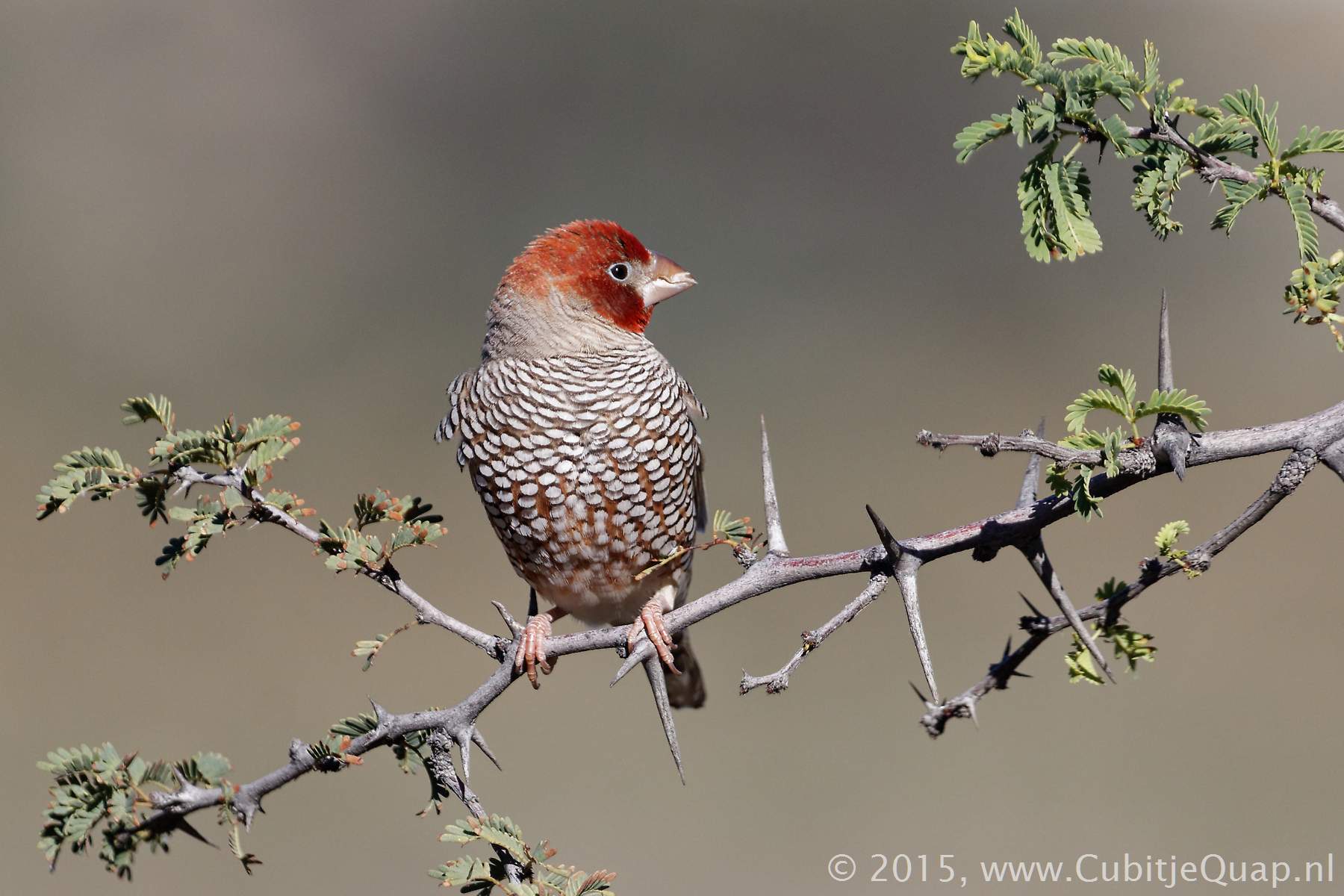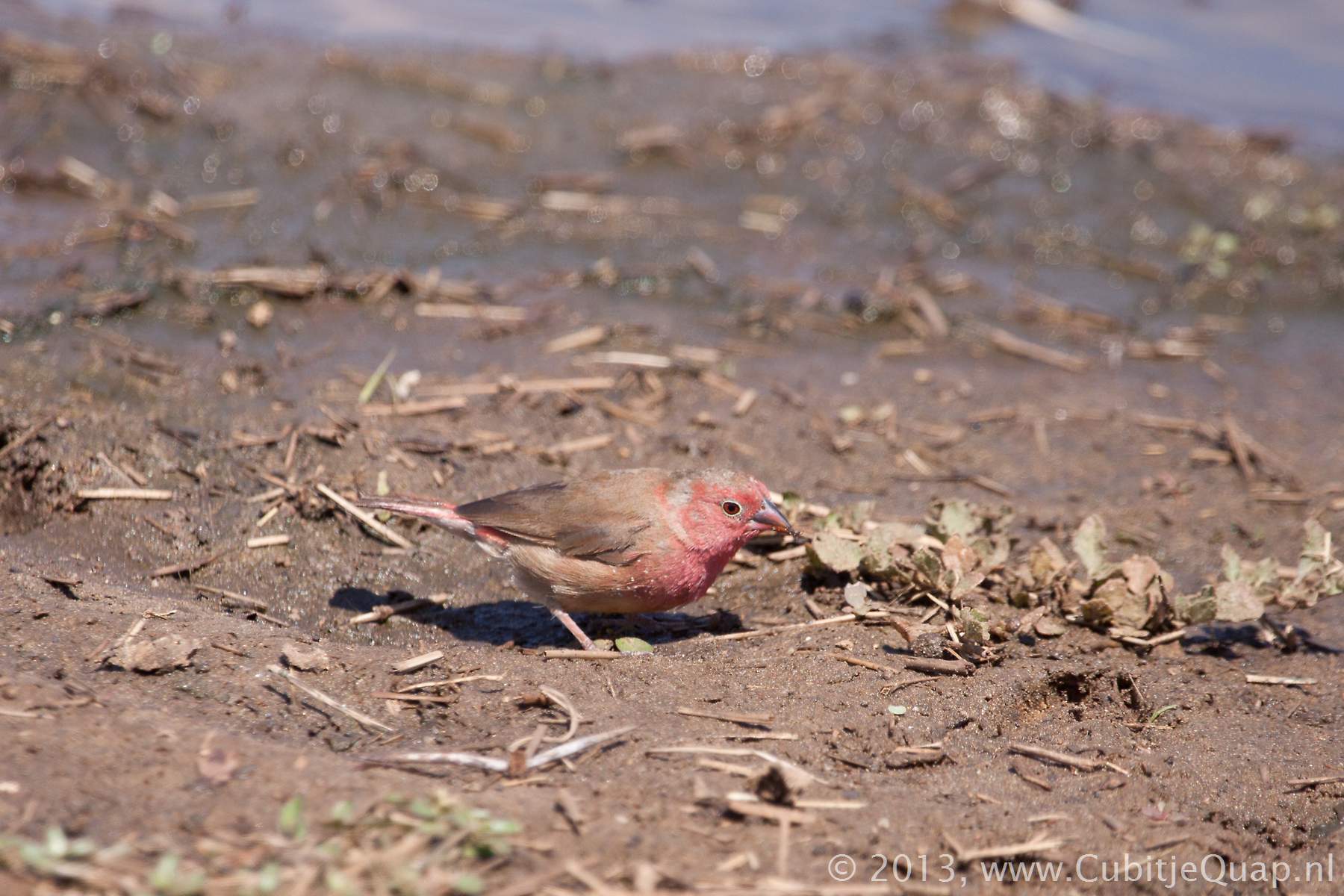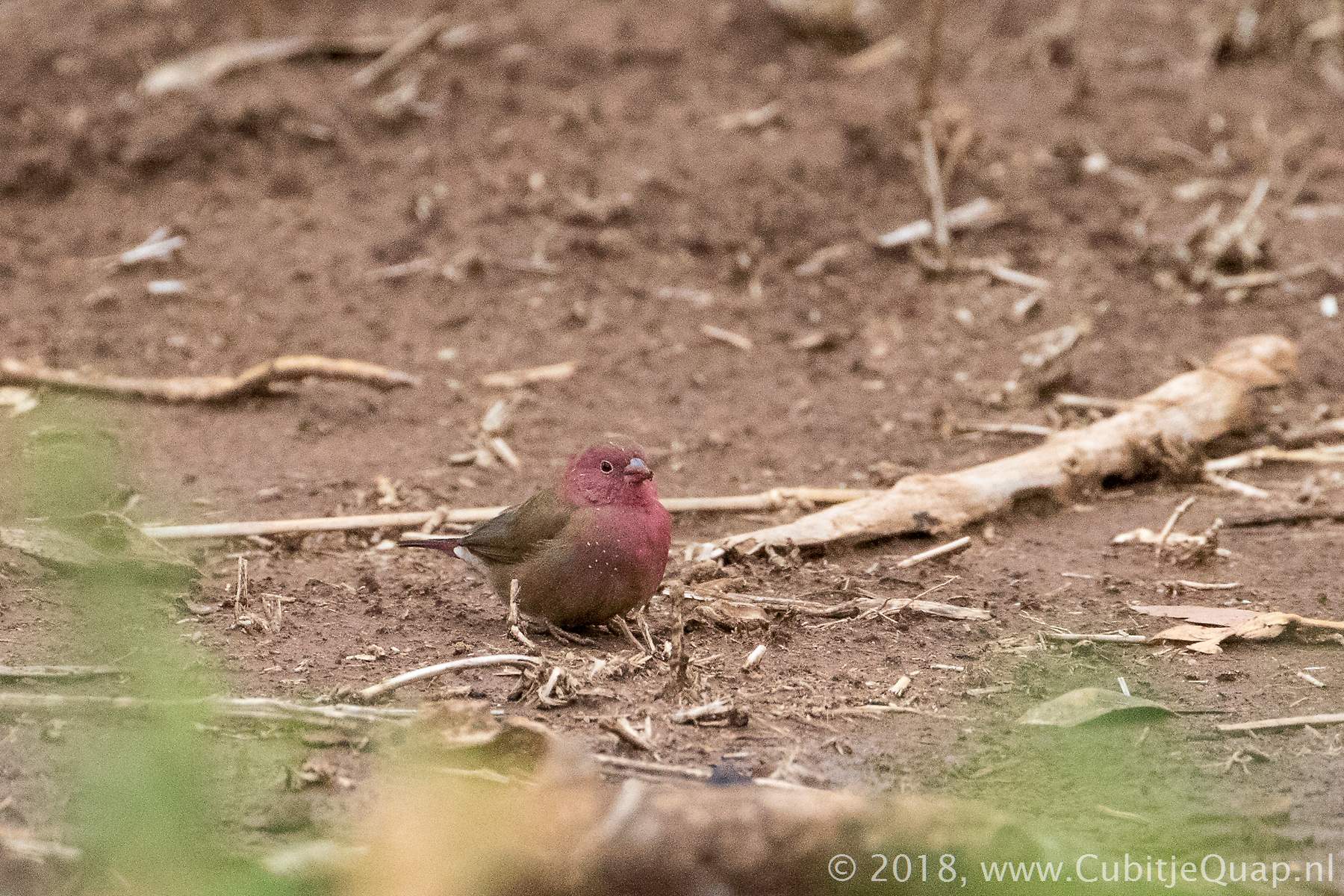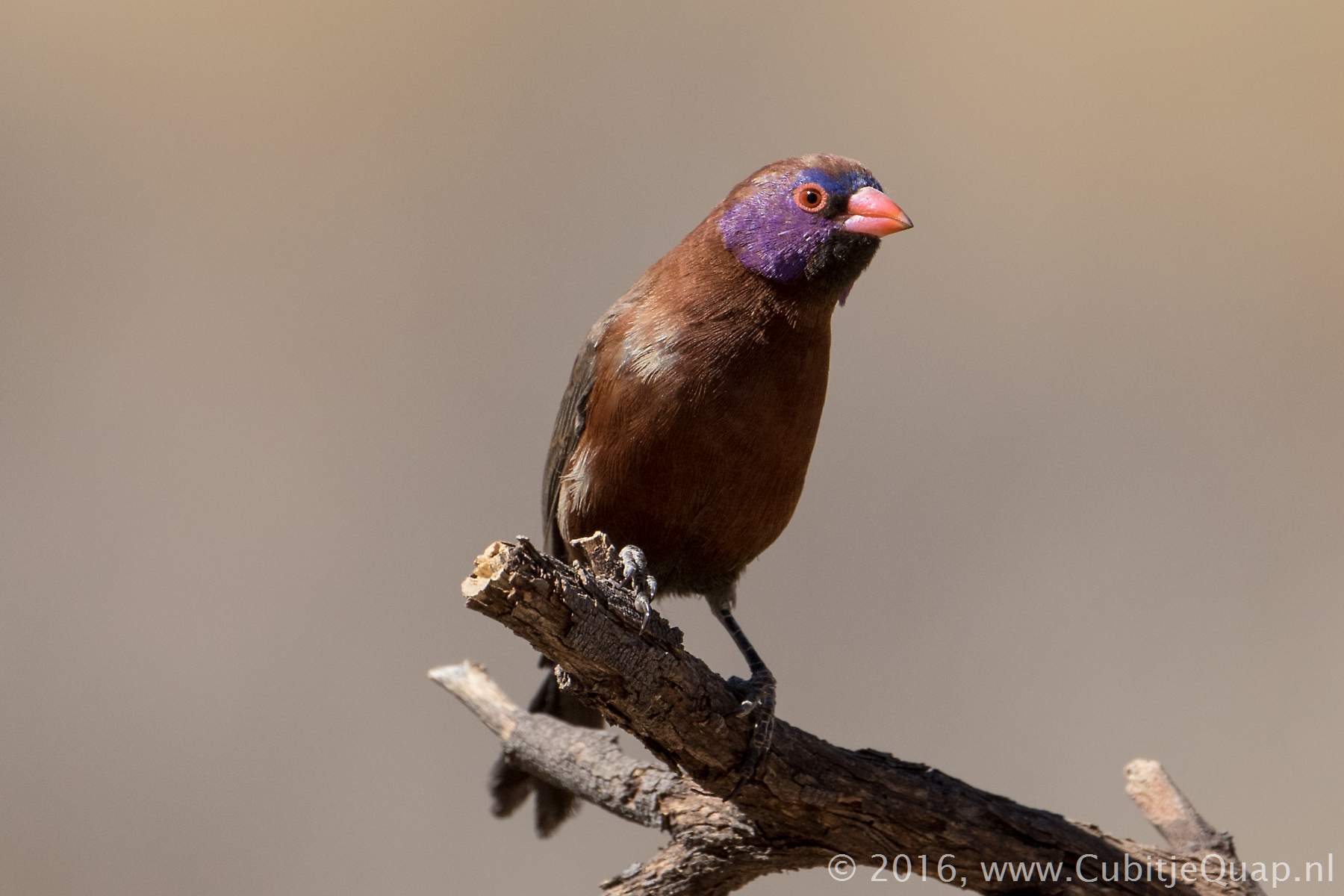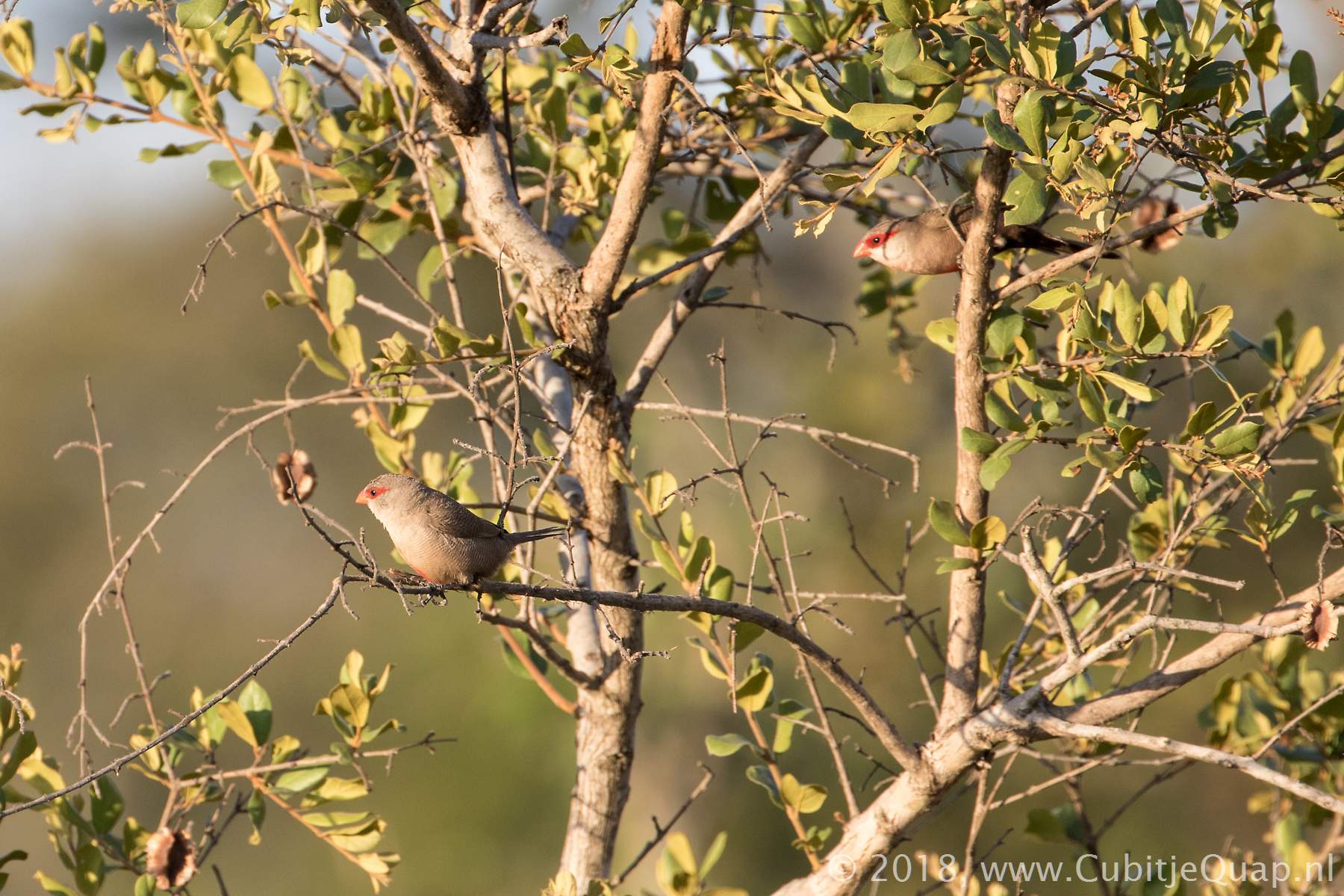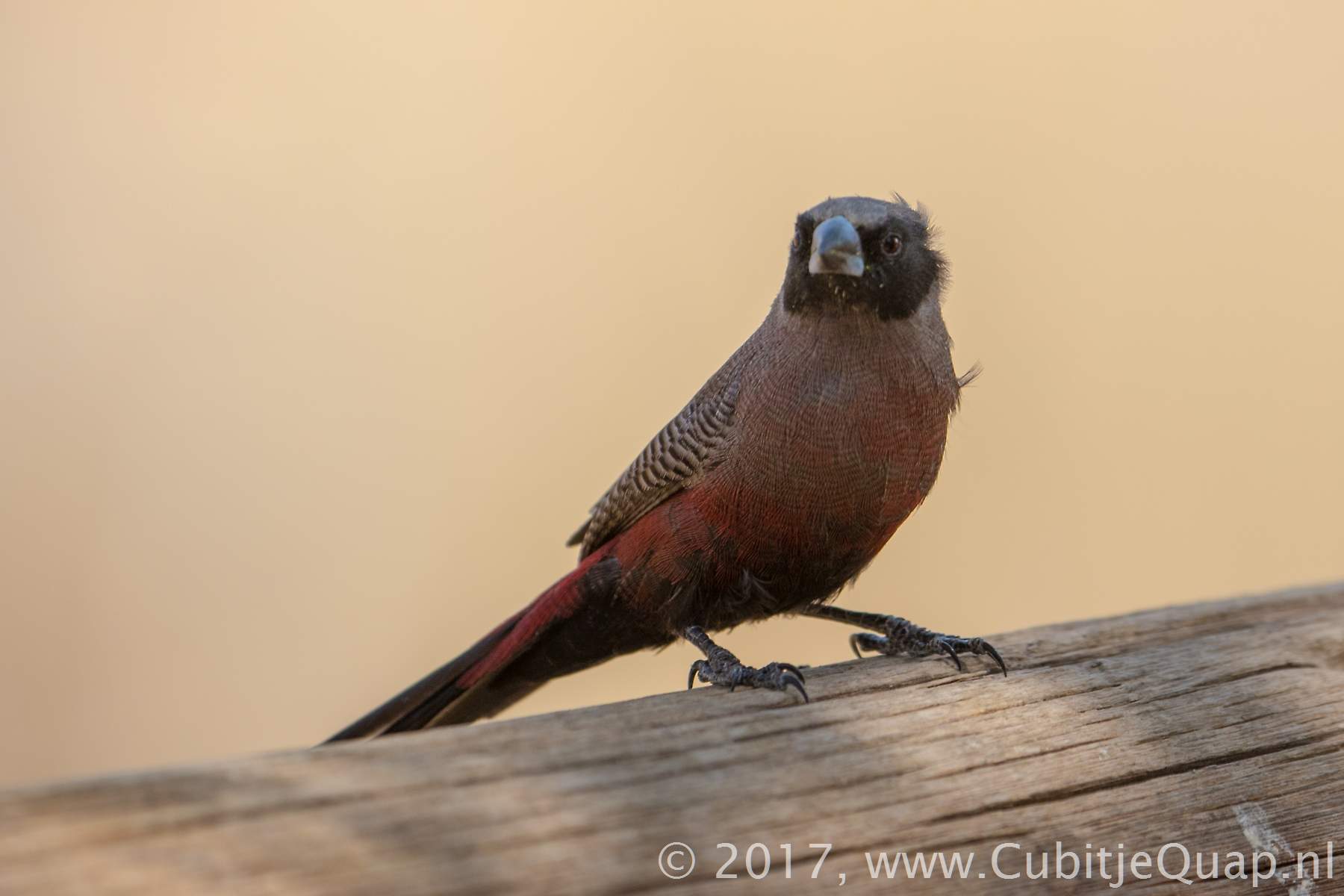Waxbills and allies Information page
Description
Small, passerines. They are gregarious and often colonial seed eaters with short, thick, but pointed bills. They are all similar in structure and habits, but vary widely in plumage colours and patterns.The are monogamous or presumed monogamous. They build large, domed nests generally a ball of grass with a side entrance, placed on or close to the ground or in a tree. Clutch size usuallly 4 - 10 white eggs. Incubation of the eggs and care of young by both sexes.
Some of the fire-finches and pytilias are hosts to the brood-parasitic indigobirds and whydahs, respectively.
Scientific names
Amadina = corruption of Ammodramus, greek for sand runnerEstriida = starred
Lagonosicta = spotted flanks
Pytilia = diminutive of Pitylus, genus of grosbeaks
Uraeginthus = finch-like tail
Finches
Fairly small in size, the males usually have characteristic red pluamge somewheren on the head. The body plumage typically has a barred of scaly appearance. The conical bill indicates that they are seed-eaters, however, they are omnivorous and will also eat insects. Virtually all food is procured on the ground.They are nomadic when not breeding, they are gregarious, occuring in big flocks (often mixed species). They favour semi-arid to arid areas and will drink and forage in groups.
They are monogamous, but not territorial. They can build their own nests, but prefer to use the old nests of weavers, sparrows, swallows, swifts or woodpeckers, which are then lined with feathers. Both sexes will incubate the eggs and care for the chicks
Firefinches
These small birds are named after their red plumage. Most have bare, brightly coloured eye-rings and small white spots on the belly and flanks.They are monogamous, forming long-term bonds and mates will sit, roost, with their bodies touching. They line their nests with feathers with courting makes carrying nesting material in display. Once the chicks have hatched, the parents eat the egg-shells. Chicks are fed by regurgitation where the adult places its bill into the open bill of the chick (not the other way around as is common in many other birds). Feacal sacks of the ckicks are not removed, resulting in the nests being fouled.
They feed om sseds which they obtain on the ground, and will move around in mexed flocks. They are dependent on surface water, but they will drink from leaves.
Pytilias
Pytilias are omnivores, taking small items of plant and animal meterial directly from the bare ground, they become slightly nomadic in winter, wandering in search of erratic food supplies. When they are disturbed on the ground, they generally flee into the canopy of trees.They typically line their nest with feathers oth other birds. Both sexes will incubate and brood. They feed their chicks by regurgitation, the adult puts its bill into the open bill of the chick (not the other way around as is common in many other birds).
Waxbills
They are named for the small waxy layers of keratin that exfoliate from the base of the bill. They primarily eat seeds and spend a lot of time on the ground.They are monogamous, often with long-term pair bonding. Both sexes build the nest and incubation is started before clutch completion. The adults remove eggshells from the nest. They feed their chicks by regurgitation, the adult puts its bill into the open bill of the chick (not the other way around as is common in many other birds).
Interesting links
Wikipediafatbirder.com

